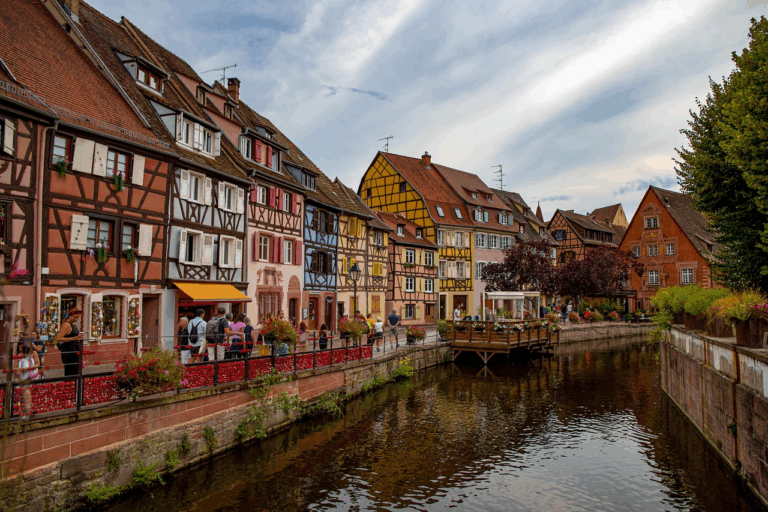Explore the world’s ten most historic cities, where cultures flourished, ancient empires grew and enduring landmarks continue to tell tales of the past.
How We Selected These Historic Cities
Our ranking methodology combines multiple criteria to identify the world’s most historically significant cities. We evaluated each destination based on the age and continuity of human settlement, the number and significance of UNESCO World Heritage Sites, their role as capitals of major empires or civilizations, and their ongoing influence on global culture and politics. Additional factors include the preservation quality of historical sites, accessibility for modern travelers, and the breadth of historical periods represented. This selection draws upon authoritative sources including UNESCO World Heritage documentation, academic historical records from Britannica, and current heritage preservation reports from official cultural ministries. The rankings reflect both historical importance and present-day visitor experience, ensuring that these destinations offer authentic connections to the past while remaining accessible to contemporary travelers seeking cultural heritage experiences in 2025.
10. Persepolis, Iran
Historical Significance
Persepolis became the ceremonial capital under Darius I and was built starting around 518 BCE; the Achaemenid Empire itself was founded earlier, under Cyrus the Great around 550 BCE. It symbolizes the immense power and wealth of ancient Persia. Despite being destroyed by Alexander the Great in 330 BCE, its ruins continue to reflect the grandeur of the Persian Empire, offering profound insights into its culture, architecture, and governance.
Key Historical Sites
The Gate of All Nations: This monumental entrance features massive stone statues symbolizing the vastness and might of the empire.
The Apadana Palace: Known for its intricate reliefs depicting the tribute of various nations to the Persian king.
The Tomb of Cyrus the Great: The burial site of the founder of the Achaemenid Empire is at Pasargadae, the earlier Achaemenid capital, about 70 to 80 kilometers from Persepolis.
Why Visit?
Visiting Persepolis offers a direct connection to one of the greatest ancient empires. The monumental architecture and carvings provide a fascinating glimpse into Persian history and culture, making it a must-visit for those interested in ancient civilizations.
Quick Tip for Travelers: Best visited in spring (March-May) or autumn (September-November) to avoid extreme heat. Wear comfortable walking shoes and bring sun protection.
9. Kyoto, Japan
Historical Significance
Kyoto, often referred to as the cultural capital of Japan, served as the country’s imperial capital for over a thousand years (794–1868). During this time, Kyoto was the center of Japan’s politics, religion, and culture, and many of the country’s most important artistic traditions were established here. While Japan underwent rapid modernization in the late 19th and early 20th centuries, Kyoto preserved much of its traditional character, making it an essential destination for anyone interested in Japan’s classical history.
Key Historical Sites
Kinkaku-ji (Golden Pavilion): One of Japan’s most iconic buildings, this Zen Buddhist temple is covered in gold leaf and set amidst tranquil gardens and ponds.
Fushimi Inari Taisha: Famous for its thousands of vermilion torii gates, which lead up Mount Inari, this Shinto shrine is one of the most visited and photographed sites in Japan.
Nijo Castle: A UNESCO World Heritage site, Nijo Castle was the residence of the Tokugawa shoguns. Its intricate design and beautiful gardens are a testament to Japan’s feudal era.
Why Visit?
Kyoto offers a unique look into Japan’s imperial and religious history. With its well-preserved temples, palaces, and gardens, visitors are transported back in time to Japan’s feudal era and classical beauty.
Quick Tip for Travelers: Visit during cherry blossom season (late March-April) or autumn foliage (November). Many temples open early, so arrive at dawn for peaceful experiences.
8. London, United Kingdom
Historical Significance
London has been a center of power and culture for over two millennia. Originally founded by the Romans as Londinium in AD 43, London grew into the capital of the Kingdom of England and later the British Empire. It became a hub for politics, trade, art, and education, leaving an indelible mark on global history. London has witnessed key moments in history, from the English monarchy’s rise to the industrial revolution and the Victorian era.
Key Historical Sites
The Tower of London: A fortress, royal palace, and prison, the Tower has been a significant symbol of British history for over 1,000 years. It houses the Crown Jewels, which are a testament to the monarchy’s legacy.
Westminster Abbey: This Gothic church has been the site of British coronations since 1066, as well as the final resting place of many monarchs and important historical figures.
The British Museum: One of the world’s most famous museums, it houses an extensive collection of artifacts from ancient Egypt, Greece, Rome, and beyond.
Why Visit?
London is a city where history comes to life, whether through its royal landmarks, historical sites, or world-class museums. Visitors can explore the city’s evolution from a Roman settlement to a global capital.
Quick Tip for Travelers: Purchase a London Pass for multiple attraction access. Book Tower of London tickets online in advance to skip queues.
7. Beijing, China
Historical Significance
Beijing, the capital of China, is a city with a history that stretches back over 3,000 years. It served as the political and cultural center of several Chinese dynasties, including the Ming and Qing Dynasties. The city’s imperial heritage is reflected in its grand palaces, temples, and fortifications, while it also holds a key role in China’s modern history. Beijing continues to be the focal point of Chinese politics and culture.
Key Historical Sites
The Forbidden City: The former imperial palace, which housed emperors from the Ming to the Qing Dynasty, is now a vast museum containing priceless cultural artifacts.
The Great Wall of China: Modern surveys describe the Great Wall as a network of walls, trenches, and natural defenses. A 2012 archaeological survey reported the whole system at about 21,196 km (about 13,170 miles), while the built wall sections that remain total roughly 8,851 km (about 5,500 miles). It was originally built to protect China from invasions and remains one of the most impressive structures in the world.
Temple of Heaven: A religious complex used by emperors for annual ceremonies, it is one of Beijing’s most iconic historical sites.
Why Visit?
Beijing is the gateway to China’s past and present, with its magnificent imperial buildings, ancient structures, and modern political heart. A visit here offers insight into both ancient Chinese culture and its ongoing transformations.
Quick Tip for Travelers: Visit the Great Wall at Mutianyu section for fewer crowds. The Forbidden City requires advance booking through their official website.
6. Jerusalem, Israel
Historical Significance
Jerusalem, often called ‘The Holy City’, is one of the oldest cities in the world, with a history that spans over 3,000 years. It holds deep religious significance for Judaism, Christianity, and Islam. Over the centuries, Jerusalem has been a battleground for conquest and a place of pilgrimage. Its historical and spiritual importance makes it one of the most visited cities for people of all faiths.
Key Historical Sites
The Western Wall: Also known as the Wailing Wall, this is the holiest site in Judaism, where worshipers gather to pray.
The Church of the Holy Sepulchre: This Christian church is believed to be the site of Jesus’ crucifixion, burial, and resurrection.
Al-Aqsa Mosque: A significant site for Muslims, the mosque stands on the Temple Mount, a place revered by multiple faiths.
Why Visit?
Jerusalem offers a profound connection to religious history, with its ancient buildings and sacred sites. The city’s atmosphere, rich in historical and spiritual depth, makes it an essential destination for any history enthusiast.
Quick Tip for Travelers: Dress modestly when visiting religious sites. Friday and Saturday have different visiting hours due to Sabbath observances. Consider hiring a local guide for deeper historical context.
5. Istanbul, Turkey
Historical Significance
Istanbul, historically known as Byzantium and later Constantinople, has been at the crossroads of civilizations for thousands of years. As the capital of both the Byzantine Empire and the Ottoman Empire, it has been a melting pot of cultures, religions, and ideologies. The city’s strategic location between Europe and Asia has made it a hub for trade, diplomacy, and military power.
Key Historical Sites
Hagia Sophia: A stunning example of Byzantine architecture, Hagia Sophia was a church, then a mosque, and later a museum. Since 2020 it has been reconverted to a mosque, while also remaining open to visitors, and has been undergoing major restoration work. Its architectural beauty reflects the city’s diverse cultural heritage.
Topkapi Palace: The lavish palace of Ottoman sultans, Topkapi Palace is full of treasures and has been a symbol of imperial power for centuries.
The Blue Mosque: An iconic mosque known for its stunning blue tiles, the Blue Mosque remains a symbol of the Ottoman Empire.
Why Visit?
Istanbul is a city where East meets West, blending Byzantine and Ottoman legacies. Its historical significance as the heart of two empires makes it an essential city for understanding the history of the Mediterranean and the Near East.
Quick Tip for Travelers: Entry to Hagia Sophia is free, but visitors must respect prayer times and dress codes. Visit early morning to avoid crowds at major sites.
4. Paris, France
Historical Significance
Paris, often referred to as the “City of Light,” has played a pivotal role in shaping Western culture and history. From the Enlightenment to the French Revolution, Paris has been the center of intellectual movements, artistic achievements, and political upheaval. The city is synonymous with art, philosophy, and revolutionary ideals.
Key Historical Sites
The Louvre Museum: One of the largest and most famous museums in the world, the Louvre houses thousands of works of art, including the iconic Mona Lisa.
Notre-Dame Cathedral: This masterpiece of Gothic architecture has been the site of numerous significant events in French history. After the devastating 2019 fire, extensive restoration was undertaken, and the cathedral reopened to visitors in December 2024, allowing people once again to experience this iconic monument.
Palace of Versailles: The extravagant palace of the French monarchy, it symbolizes the opulence and excess of the French royal family before the revolution.
Why Visit?
Paris offers an unparalleled blend of history, art, and culture. The city is full of iconic landmarks that reflect its transformative role in Western civilization.
Quick Tip for Travelers: Book Notre-Dame visits online in advance. The Louvre is free on the first Sunday of each month. Consider a Paris Museum Pass for multiple attractions.
3. Cairo, Egypt
Historical Significance
Cairo, Egypt’s sprawling capital, is the heart of one of the world’s oldest and most influential civilizations. As the gateway to the ancient wonders of Egypt, Cairo is home to iconic landmarks like the Pyramids of Giza and the Sphinx. The city has a rich history that spans thousands of years, with a blend of ancient Egyptian, Islamic, and modern history.
Key Historical Sites
The Pyramids of Giza: The most famous monuments in Egypt, these ancient wonders continue to mystify and awe visitors with their incredible construction.
The Egyptian Museum and Grand Egyptian Museum: While the Egyptian Museum holds an extensive collection of ancient artifacts, many treasures, including those of King Tutankhamun, are now prominently displayed in the new Grand Egyptian Museum near Giza, which opened in 2021 as the world’s largest archaeological museum, offering visitors an unprecedented experience of ancient Egyptian history.
Islamic Cairo: A district that showcases Cairo’s Islamic heritage, filled with mosques, markets, and medieval architecture.
Why Visit?
Cairo offers a unique opportunity to explore the wonders of ancient Egypt alongside Islamic and Coptic history. With the opening of the Grand Egyptian Museum, visitors now have access to an even more comprehensive collection of artifacts. It is an essential destination for anyone interested in the ancient world and its lasting legacy.
Quick Tip for Travelers: Visit pyramids early morning (7-8 AM) to avoid heat and crowds. Hire official guides at the entrance. The Grand Egyptian Museum offers excellent air-conditioned facilities.
2. Athens, Greece
Historical Significance
Athens, often considered the cradle of Western civilization, is the birthplace of democracy, philosophy, and the arts. As the center of ancient Greece, Athens gave rise to some of the greatest thinkers and philosophers in history, including Socrates, Plato, and Aristotle. The city’s rich history is still visible today in its ancient ruins and monuments.
Key Historical Sites
The Acropolis: A citadel that overlooks the city, the Acropolis is home to the Parthenon, a symbol of ancient Greek culture and architecture.
The Ancient Agora: The political and philosophical heart of Athens, where Socrates taught and the foundations of democracy were laid.
Temple of Olympian Zeus: Once the largest temple in Greece, it stands as a reminder of the grandeur of ancient Athens.
Why Visit?
Athens offers visitors the chance to walk through the history that shaped Western thought, democracy, and philosophy. The city’s ancient ruins provide a deep connection to the past.
Quick Tip for Travelers: Purchase a combo ticket covering Acropolis and other ancient sites. Visit in shoulder season (April-May, September-October) for pleasant weather and fewer tourists.
1. Rome, Italy
Historical Significance
Rome, often called “The Eternal City,” is a living museum that has been a center of power, culture, and religion for over 2,500 years. From its legendary founding by Romulus and Remus to its role as the capital of the Roman Empire, Rome is one of the most influential cities in human history. The city has seen the rise and fall of empires, the birth of Christianity, and the renaissance of art and culture.
Key Historical Sites
The Colosseum: An ancient amphitheater where gladiators fought, the Colosseum is one of the most famous landmarks of Rome and a symbol of ancient Roman engineering.
The Roman Forum: The heart of ancient Rome’s political and social life, where emperors and citizens gathered to make decisions.
Vatican City: The smallest country in the world, Vatican City is home to St. Peter’s Basilica, the Sistine Chapel, and countless other treasures of art and religion.
Why Visit?
Rome is the ultimate destination for history lovers, where the ruins of the Roman Empire, the Renaissance, and Christianity’s birth coexist. The city offers an unforgettable experience with its ancient monuments, stunning churches, and vibrant culture.
Quick Tip for Travelers: Book Colosseum and Vatican tickets weeks in advance. Roma Pass offers transportation and museum access. Wear comfortable shoes—expect to walk 10+ km daily.
Conclusion: Your Journey Through Time Awaits
These 10 cities are some of the most historically rich places in the world, each offering unique insights into different civilizations, cultures, and eras. From the ancient wonders of Egypt to the grandeur of Rome, these cities hold the key to understanding our shared past. Visiting them is a journey through time, one that allows us to connect with history in a way that no textbook ever could.







